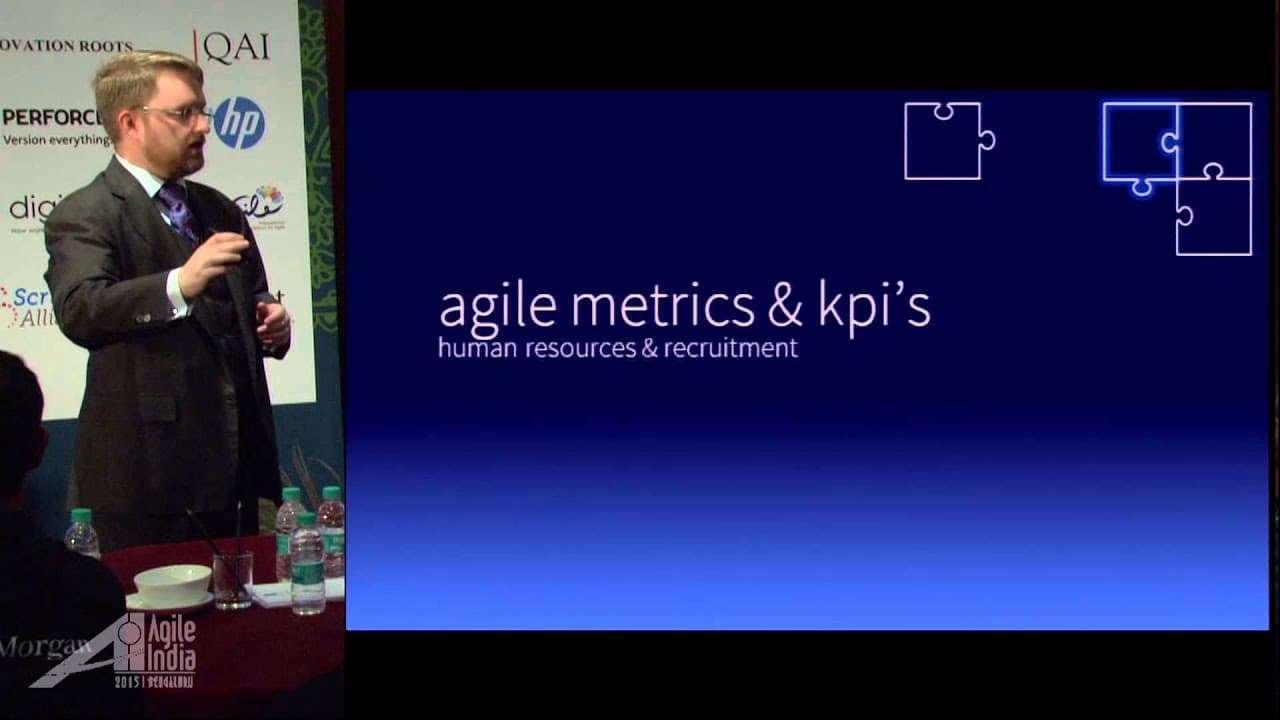So this talk is going to be a little bit different from the ones you'll probably hear. I'm not going to talk about technology, agile practices, or processes. I'm not even going to mention the manifesto that much. This talk is more about how other business functions work.
Let’s do a quick show of hands—who here works in IT in some fashion? Yep, most of you, as expected. But this talk is not going to be about IT. It’s about everyone else in your organization who is not in IT and how you can work with them, convince them, and help them help you become agile.
An agile IT division is not self-contained. It may be a silo or a matrix organization, but it interfaces with finance, HR, sales, marketing, and other divisions. What we’re going to discuss today is how to align across the organization so you can be successful.
Understanding Your Organization’s Outcomes
Let's start with the core principle of why your business exists. Think of your company’s outcomes. What are you producing? Who are your customers? Is your company focused on a technology outcome or a non-technology outcome?
Show of hands—how many of you are writing software and selling it to other people? About a third of you. The rest of you are in supporting industries, producing IT software functions to support the rest of the organization. In those cases, where your work is not being directly sold, you are a supporting function—an enabler—ensuring the rest of the organization is as successful as possible.
In Jeff’s talk this morning, he spoke about outcomes, which is crucial. You may be producing outputs—a capability or function—but what matters is the behavioral change or outcome that impacts the business. So, think about your organization’s outcomes—not just your division’s outputs. Write that down. Your business is not about producing widgets or mining resources; it’s about achieving specific outcomes.
Enterprise Architecture Beyond IT
We all know Enterprise Architecture as a term related to software systems, but I want you to think bigger. Consider your Enterprise Architecture as the structure of your business: What are the silos? Who reports to whom? How does the organization function?
By understanding these structures, you can identify value drivers, constraints, and enablers. That brings us to the key question: How can you be agile in a non-agile business?
Most businesses are not naturally agile. Business management theory since the late 1970s—and really since post-World War II—has been command and control. Organizations built patterns, processes, and models to ensure stability. But business, by its nature, is chaotic. With thousands of employees, external factors, and constant change, these patterns attempt to bring order.
So, how do we fit agility into this? How do we work within these patterns while maintaining an agile approach?
Key Business Functions and Their Role
Let’s examine three critical business functions that IT interfaces with: Finance, HR, and Sales & Marketing.
Finance
Finance is responsible for cash flow, accounting, accounts receivable, and budgets. Their job is not to generate new money but to manage it. They prioritize predictability, ensuring the business stays financially stable.
Most of you work within annual budgets, three-year forecasts, or even five-year forecasts. But how can you be agile if finance has already planned every project for the next three years? This creates false predictability, as budgets are often cut or reallocated mid-cycle.
Strategies for Agile Finance
- Rolling Budgets: Finance operates in annual cycles, but that doesn’t mean IT must as well. Rolling budgets allow for month-by-month adjustments, avoiding the common “spend it all before the year ends” mentality.
- Contingency and Trust: Finance can allocate a 10-15% contingency fund for teams, allowing for agility in hiring contractors, procuring tools, or adjusting project priorities. However, this requires trust between IT and Finance.
- Transparency: Agile and Finance share a key value—transparency. Leveraging transparency can help build alignment between the two.
Human Resources (HR)
HR is accountable for payroll, talent management, recruitment, training, and compliance. Their role is primarily about ensuring the business, not necessarily the employees, are protected.
Agile HR Strategies
- Agile KPIs: Instead of function-specific job descriptions (e.g., “tester”), HR should focus on cross-functional roles.
- Team-Based Bonuses: Individual KPIs can drive negative behaviors. Instead, bonuses should be based on team outcomes.
- Kanban for HR: HR processes often have short, reactive cycles, making Kanban a suitable framework.
- Rolling Recruitment: Instead of predefined positions, organizations should have a permanent hiring process based on outcomes and skills.
Sales & Marketing
Sales & Marketing focuses on customer acquisition, branding, and revenue generation. However, sales teams are often highly competitive and operate on individual quotas, making agility difficult.
Agile Sales & Marketing Strategies
- Collaboration Over Competition: Sales should align with IT’s development cycle to prevent unrealistic delivery expectations.
- Embedded Sales Teams: Sales should work closely with product teams rather than being separate entities.
- Eliminating Commissions: Commission-based incentives encourage individualistic behavior, which is counterproductive to agility.
Communicating Agile Across the Enterprise
Agile should not be imposed—it should be sold. Selling agile is about aligning it to business outcomes, not IT benefits.
Key Communication Strategies
- Build Credibility: Understand and respect the business objectives of other functions.
- Develop Relationships: Engage with HR, Finance, and Sales in meaningful conversations about their pain points.
- Find Concession Points: Some policies, such as labor laws or tax regulations, are non-negotiable. Identify these early.
- Frame Agile as a Business Enabler: Instead of explaining agile methodologies, demonstrate how agility supports company objectives.
Aligning Agile with Value and Revenue Drivers
Ultimately, agility must align with the organization’s value and revenue drivers.
- Value Drivers: Identify what matters most to your organization—reputation, customer satisfaction, operational efficiency.
- Revenue Drivers: Understand where the money comes from and position agile as a means to enhance profitability.
Conclusion
To make agile work across an organization, IT must move beyond its own processes and build partnerships with other business functions. By aligning agility with financial, HR, and sales objectives, IT can create an environment where agility thrives.
Thank you for your time. If you have any questions, feel free to ask or reach out to me later.



